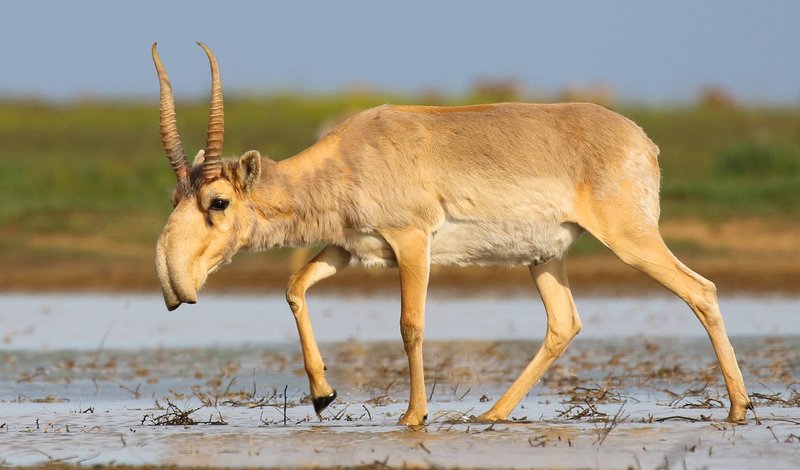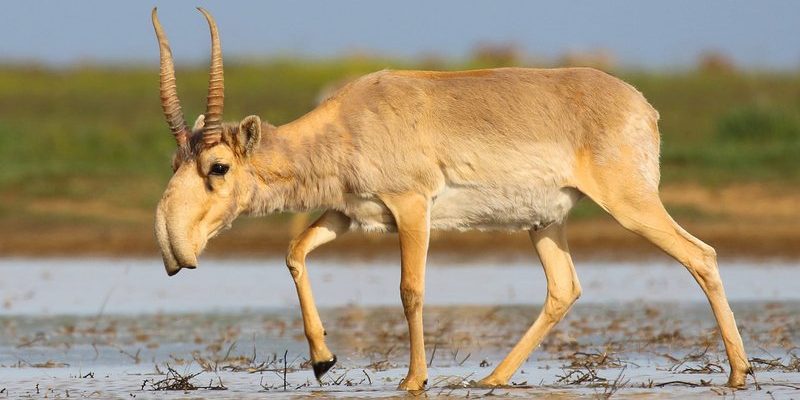
Picture this: a vast, open steppe dotted with wildflowers and grasses, where herds of saiga roam free. They are not just beautiful to watch; their grazing habits and behaviors make them essential partners in their habitat. Let’s take a deeper look at how the saiga antelope contributes to the ecosystem, why its presence matters, and what we can learn from its existence.
Understanding the Saiga Antelope
The saiga antelope, known scientifically as *Saiga tatarica*, is a critically endangered species found primarily in Central Asia. They inhabit the plains of Kazakhstan, Mongolia, and parts of Russia, favoring the grasslands and steppes where they can roam and forage freely.
With their unique adaptations—like a distinctive, oversized nose that helps filter out dust during dry seasons—saigas are built to thrive in harsh environments. They have a light build and are incredibly agile, allowing them to cover large distances in search of food and water. These adaptations make the saiga an interesting study in evolution, showing how species can adapt to survive in specific ecosystems.
Moreover, the saiga’s social behavior is fascinating. They often travel in herds, which provides safety in numbers against predators. This social dynamic plays a role in maintaining their population and ensuring the survival of the species amidst challenges like habitat loss and poaching.
The Grazing Habits of Saiga Antelopes
Saiga antelopes are herbivores, primarily feeding on grasses and herbs. This grazing behavior is crucial for their ecosystem. By consuming vast amounts of vegetation, they help maintain the health and diversity of the grasslands.
Why does this matter? Well, regular grazing prevents certain plants from becoming overly dominant. Think of it like maintaining a well-trimmed garden; without regular care, some plants can choke out others. Similarly, when saigas graze, they allow various plant species to thrive, which supports a rich array of other wildlife.
Interestingly, the saiga’s feeding habits also contribute to the nutrient cycle within their ecosystem. As they graze, they deposit manure, which enriches the soil and promotes the growth of new plants. This natural process supports not only the saiga’s diet but helps sustain other animal populations that depend on these plants for food.
The Saiga’s Role in Biodiversity
Biodiversity is essential for a healthy ecosystem, and saiga antelopes contribute significantly to this aspect. Their grazing helps maintain a balanced plant community, which, in turn, supports a variety of other species, from insects to predators.
By ensuring that no single plant species takes over the landscape, saigas create a more complex and stable environment. This diversity is important for resilience against changes—be it climate shifts or human impact. A rich tapestry of life is better able to adapt and bounce back from disturbances.
Moreover, the presence of saigas influences predator populations. Animals like wolves and lynxes often prey on saigas, and their existence helps maintain the natural balance between herbivores and predators. If saiga populations decline, it can lead to an increase in plant populations that may not be beneficial for the ecosystem, disrupting the entire food web.
Human Impact on Saiga Antelope Populations
Unfortunately, human activities have taken a toll on saiga populations. Habitat loss due to agriculture, poaching for their horns, and climate change are significant threats facing these animals.
You might be wondering how these factors affect not just the saiga but the entire ecosystem. When saiga numbers dwindle, the vegetation they help control can grow unchecked. This can lead to a decline in plant diversity, which affects other species that rely on these plants. Additionally, fewer saigas mean fewer nutrients being recycled back into the soil, disrupting the nutrient cycle.
Conservation efforts are underway to protect saiga populations. Initiatives focus on habitat preservation, anti-poaching laws, and raising awareness about the importance of saigas in their ecosystem. By supporting these efforts, we can help ensure these incredible creatures continue to play their vital role in maintaining the balance of their environment.
The Future of the Saiga Antelope
Looking ahead, the future of the saiga antelope remains uncertain. Despite ongoing conservation efforts, they still face numerous challenges. Climate change, for example, could alter their habitats and food availability, pushing them into even more precarious situations.
But there’s hope! Successful conservation programs show that with global support, there can be a positive outcome. Local communities are becoming increasingly involved in preservation efforts, recognizing the saiga’s value not just as a species but as a cornerstone of their ecosystem.
The return of healthy saiga populations can also boost ecotourism, bringing economic benefits while simultaneously promoting awareness of conservation. It’s a win-win! The more people learn about the saiga and its role in the ecosystem, the more likely they are to take action to protect it.
In summary, the saiga antelope is much more than just a unique-looking animal. Its grazing habits, social behavior, and critical role in biodiversity make it an essential part of its ecosystem. As we face environmental changes and challenges, understanding the importance of each species—including the saiga—becomes crucial.
By advocating for conservation efforts and recognizing the interconnectedness of life in our ecosystems, we can help ensure that these remarkable animals—and all the other life forms they support—continue to thrive for generations to come. So next time you think of the saiga antelope, remember just how integral it is to maintaining the rich tapestry of life in its home.

